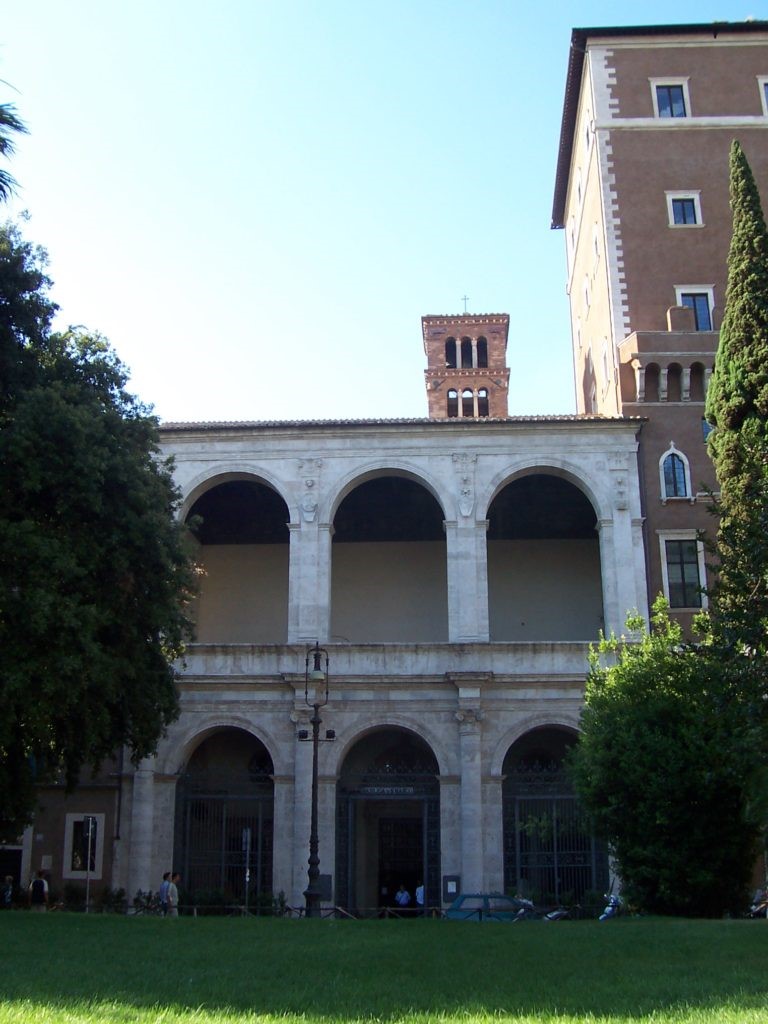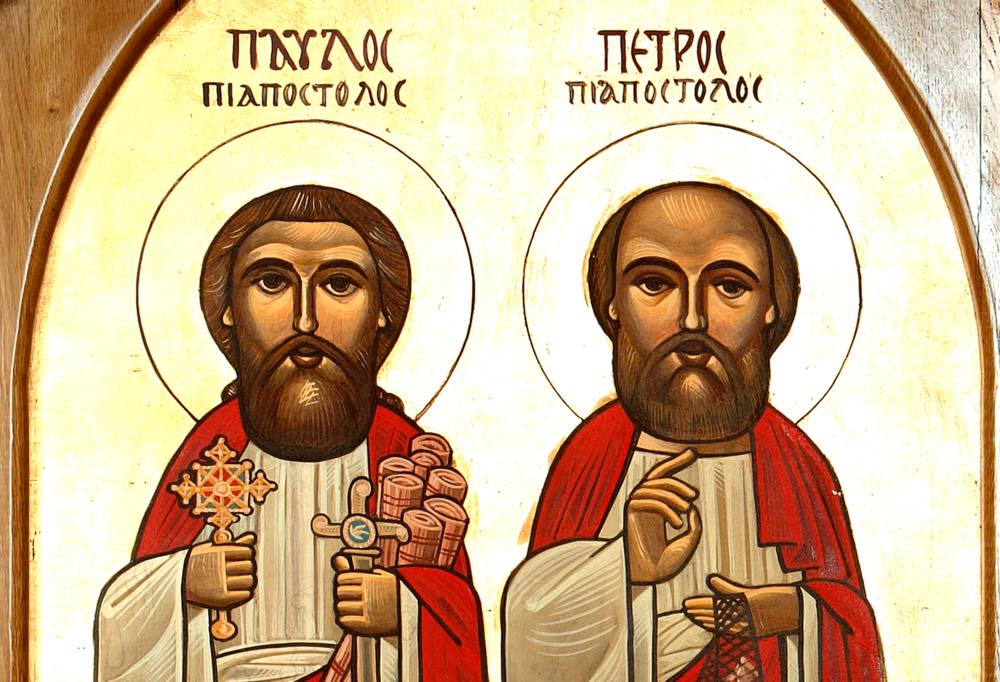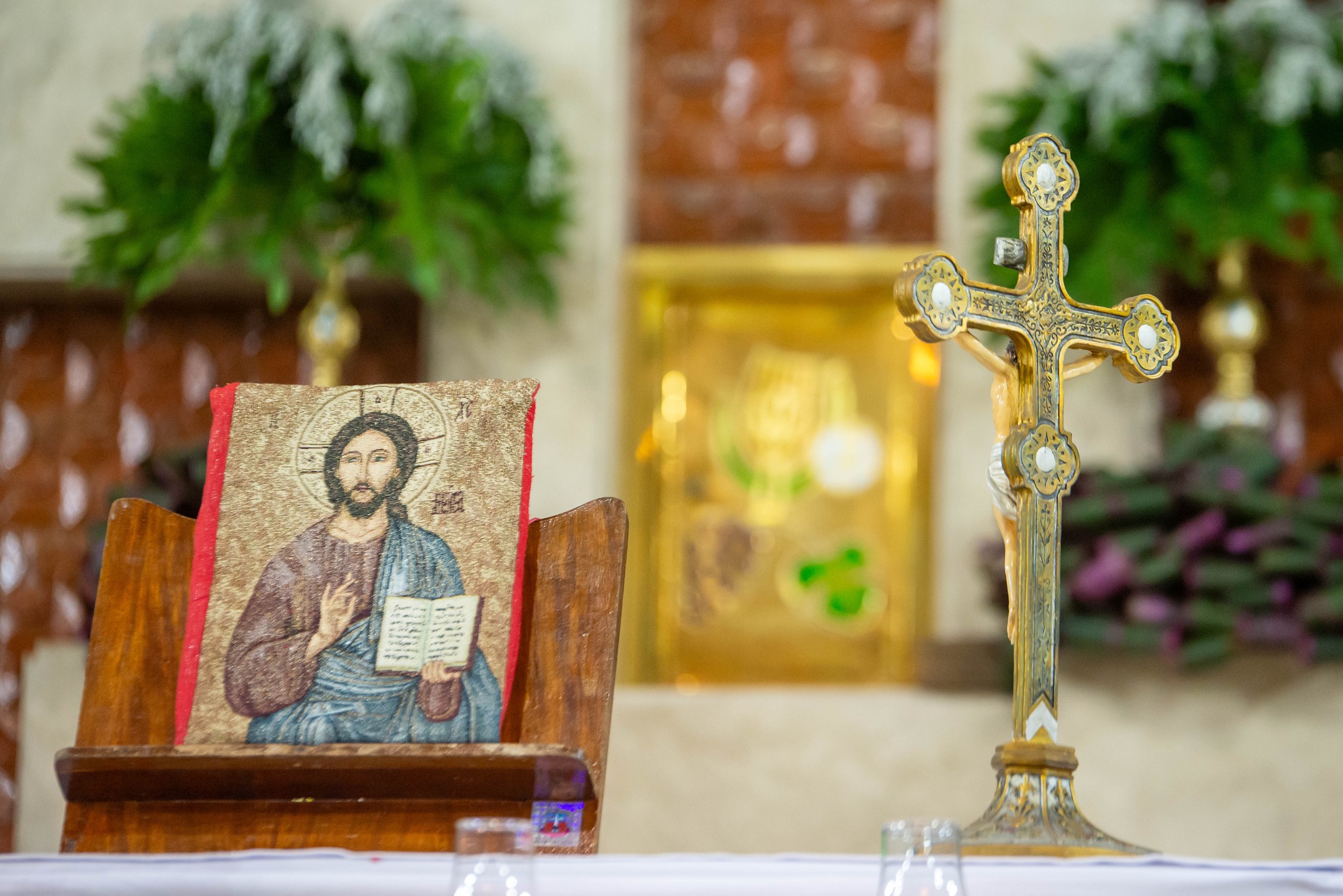If you visit Rome, there is a very good chance that you will pass through Piazza Venezia one day or the other. Indeed I have to say that it is almost impossible to miss the chance to walk here because it is a passage point for the Coliseum, Via del Corso, the Campidoglio….
Furthermore, in Piazza Venezia there is Palazzo Venezia, too, where Benito Mussolini used to work and address the people during the years of fascism. A church is also connected to this building, which is a quite important one, dedicated to Saint Mark the evangelist.
The website of this minor basilica describes its history: “The basilica of S. Marco is one of the oldest Roman churches that stands in the center of the imperial city near the Septa Julia, the large arcades built for people to gather and cast their vote was inaugurated in 26 BC. According to tradition, the evangelist Mark lived with a Christian family on the slopes of the Capitol in the same vicinity. He came to Rome with St Peter and founded an oratory in that place. Subsequently, Pope Mark (337-340 [sic]) transformed the original oratory into a basilica, as soon as the persecutions against Christians ceased, with the contribution of the gifts received from the emperor Constantine.”
So, like other churches in Rome, this one was also built in an area where tradition says that the apostles, the evangelists, or other notable figures in Christian ancient history lived.
But let us now look at the development of this Basilica in medieval times: “The primitive basilica was probably destroyed in the fifth century due to a fire, the traces of which carbonized materials remain in the subsoil, a few meters below the current level. In the 6th and 7th centuries, the church suffered looting and devastation during the incursions of the Goths, the Lombards, and the Byzantines. Finding it in ruins, Pope Hadrian I (772-795) took care of it, adorning it with mosaics, paintings and furnishings. In 791, the church was flooded by the waters of the Tiber river. In the ninth century, Pope Gregory IV (827-844) restored the basilica and had its triumphal arch and apse decorated with the mosaics that we still see today The same pontiff is represented alongside the figure of Christ, the square nimbus (as he was alive) and holding in his hands the model of the church he rebuilt. The subsequent historical information dates back to the XII century when the Roman marble workers built the small Romanesque bell tower, which still exists today (the bell dates back to 1288). The masters Giovanni, Pietro, Angelo, and Sansone, worked on the ciborium, which was destroyed later, and of which perhaps remain only the porphyry columns at the side entrances of the presbytery as well as ten columns currently in the porch.”
So, this was a church that was under the constant care of various Popes. Let us just look at the description that highlights the changes that occurred in the Basilica during the 15th century: “In the fifteenth century, the basilica was radically transformed by Cardinal Pietro Barbo, a Venetian patrician, who became pontiff in 1464 with the name of Paul II, who next to the church had built his own palace, known as S. Marco, and later in Venice, as it became the seat of the Venetian ambassadors in Rome, after the donation made by Pius IV, in 1564, to the Venetian Republic. The splendid two-sided façade is due to the initiative of Paul II (1464-1471) and, inside, the large shell niches of the side aisles, the mullioned windows, the lacunar ceiling (made in 1471 by Giovanni and Marco de ‘Dolci’ and decorated by Giuliano degli Amidi who used 200 gold and 300 silver sheets), as well as the roof covering with lead plates (lost in the restoration of 1850) in which the architect Bernardo di Lorenzo worked from Florence in 1467. Much has been discussed about the artistic authorship of the portico and the three-arched loggia above (which has much analogy with the loggia of the blessings of St Peter’s Basilica in the Vatican, built at the time of Pius II Piccolomini and destroyed in the early 17th century by Carlo Maderno to create the new facade of the church) which, by authoritative authors, is attributed to the genius of Leon Battista Alberti. The arches of the upper loggia were closed in 1738, by ambassador Marco Foscarini, with windows, replaced by walls by ambassador Niccolò Erizzo, to recover space, and reopened only in 1916 when the palace of S. Marco was returned to the Italian state. Paul II built the central door of the church, surmounted by a relief depicting Marco Evangelista. It is attributed to the sculptor Isaiah of Pisa, while his nephew, Cardinal Marco Barbo (who had had the title of St. Mark since 1464), was interested in restoration work. He was responsible for the two side doors of the church and the ciborium decorated with sculptures by Giovanni Dalmata and Mino da Fiesole, already in the presbytery, transported in the 18th century to the sacristy where it is preserved, but incomplete. In 1474, during the pontificate of Sixtus IV, the bodies of St Mark and the martyrs Abdon and Sennen and other relics were moved to the basilica consecrated to St Mark the Evangelist.”
This Basilica is certainly worth a visit. (Photo courtesy of Wikimedia.)


 Follow
Follow


